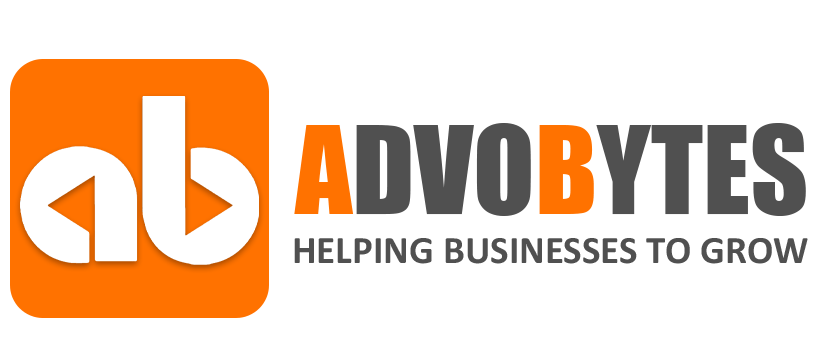Local SEO (Search Engine Optimization) is crucial for businesses aiming to attract customers in specific geographic areas. Here are the top 10 best strategies for maximizing your local SEO presence:
- Google My Business Optimization: Claim and optimize your Google My Business listing with accurate information about your business, including your name, address, phone number (NAP), business hours, website URL, and categories. Regularly update your listing with fresh content, images, and reviews to enhance visibility in local search results.
- Local Keyword Research: Conduct keyword research focusing on terms relevant to your locality, such as city names, neighborhoods, landmarks, and phrases commonly used by local customers. Integrate these keywords naturally into your website content, meta tags, and business listings to improve local search rankings.
- Localized Content Creation: Develop high-quality, localized content that resonates with your target audience and addresses their specific needs and interests. Create blog posts, articles, and landing pages that highlight local events, news, and community initiatives, demonstrating your relevance and authority within your geographic area.
- NAP Consistency Across Directories: Ensure consistency of your business name, address, and phone number (NAP) across all online directories, citation sites, and social media platforms. Inaccurate or inconsistent information can confuse search engines and potential customers, negatively impacting your local SEO efforts.
- Online Reviews Management: Encourage satisfied customers to leave positive reviews on platforms like Google My Business, Yelp, and Facebook. Respond promptly and professionally to all reviews, whether positive or negative, demonstrating your commitment to customer satisfaction and building trust with potential customers.
- Local Link Building: Earn high-quality backlinks from local websites, blogs, and directories to boost your website’s authority and credibility in local search results. Partner with local organizations, sponsor local events, or participate in community initiatives to attract relevant inbound links from authoritative sources.
- Mobile-Friendly Website Design: Optimize your website for mobile devices to provide a seamless browsing experience for users on smartphones and tablets. Ensure fast page loading times, clear navigation, and responsive design to improve user engagement and retention, factors that also influence local search rankings.
- Schema Markup Implementation: Incorporate schema markup, such as local business schema, on your website to provide search engines with structured data about your business, including your location, contact information, operating hours, and customer reviews. Schema markup helps search engines understand your content better, increasing the likelihood of appearing in relevant local search results.
- Localized Social Media Engagement: Engage with your local community on social media platforms like Facebook, Twitter, and Instagram by sharing relevant content, participating in local conversations, and promoting special offers or events. Building an active presence on social media not only strengthens your brand visibility but also signals relevance to search engines for local searches.
- Monitoring and Analytics: Regularly monitor your local SEO performance using tools like Google Analytics and Google Search Console. Track key metrics such as local search rankings, website traffic, click-through rates, and conversion rates to evaluate the effectiveness of your strategies and identify areas for improvement. Adjust your approach based on insights gleaned from data analysis to continuously optimize your local SEO efforts and stay competitive in your target market.
By implementing these top 10 strategies for local SEO, businesses can enhance their visibility, attract more qualified leads, and drive revenue growth within their local communities. Effective local SEO not only improves search engine rankings but also builds brand authority, fosters customer trust, and establishes long-term relationships with local customers, positioning businesses for sustainable success in the competitive digital landscape.

- Optimize Google My Business (GMB): Claim and verify your business listing on GMB. Ensure that all information (name, address, phone number, website URL, business hours, etc.) is accurate and up-to-date. Regularly post updates, respond to reviews, and utilize GMB features like Q&A and Google Posts.
- Local Keyword Research: Conduct thorough keyword research to identify relevant local search terms related to your business and location. Use tools like Google Keyword Planner, SEMrush, or Moz to discover high-volume, low-competition keywords that your target audience is searching for.
- On-Page Optimization: Optimize your website’s on-page elements (title tags, meta descriptions, headers, content, and URLs) with local keywords and location-specific information. Create unique, informative, and valuable content that caters to local interests and needs.
- Local Business Schema Markup: Implement Schema markup on your website to provide search engines with structured data about your business, such as name, address, phone number, business hours, reviews, and more. This helps search engines understand your business better and improve your visibility in local search results.
- Local Citations and Directories: Build consistent and accurate citations (mentions of your business name, address, and phone number) across authoritative local directories, industry-specific platforms, and social media channels. Ensure that your NAP information is consistent across all platforms to enhance trust and credibility.
- Localized Content Creation: Develop localized content that resonates with your target audience. This could include blog posts, articles, case studies, and guides tailored to address local concerns, events, trends, and interests. Incorporate local keywords naturally throughout your content.
- Mobile Optimization: Optimize your website for mobile devices to ensure seamless user experience for visitors accessing your site on smartphones and tablets. Use responsive design, optimize page speed, and implement mobile-friendly navigation to improve usability and engagement.
- Online Reviews and Reputation Management: Encourage satisfied customers to leave positive reviews on platforms like Google, Yelp, Facebook, and industry-specific review sites. Respond promptly and professionally to both positive and negative reviews to demonstrate excellent customer service and enhance your online reputation.
- Local Link Building: Build high-quality backlinks from local websites, blogs, news outlets, and community organizations to increase your website’s authority and relevance in local search results. Participate in local events, sponsor local charities, and collaborate with other businesses to earn valuable local links.
- Local Social Media Engagement: Engage with your local community on social media platforms like Facebook, Instagram, Twitter, and LinkedIn. Share relevant content, interact with followers, participate in local discussions, and promote local events to build brand awareness and foster relationships with potential customers.
- Geo-Targeted Ads: Utilize geo-targeted advertising campaigns on platforms like Google Ads, Facebook Ads, and Instagram Ads to reach local customers within specific geographic areas. Target your ads based on location, interests, demographics, and behavior to maximize relevance and effectiveness.
- Localized Landing Pages: Create dedicated landing pages for specific locations or service areas to optimize your website for local search intent. Customize content, imagery, and calls-to-action to address the needs and preferences of users in each target location.
- Monitor Local SEO Performance: Track key performance indicators (KPIs) such as local search rankings, website traffic, online visibility, conversion rates, and customer reviews. Use tools like Google Analytics, Google Search Console, and local SEO software to analyze data, identify trends, and make informed decisions to improve your local SEO strategy.
- Local Partnerships and Sponsorships: Forge partnerships with local businesses, organizations, and influencers to expand your reach and visibility within the community. Collaborate on joint promotions, events, or campaigns that benefit both parties and strengthen your local presence.
- Stay Updated with Local SEO Trends: Keep abreast of the latest developments, updates, and algorithm changes in the world of local SEO. Follow industry blogs, attend conferences, join online communities, and participate in discussions to stay informed and adapt your strategy accordingly.
By implementing these top 10 best strategies for Local SEO, businesses can enhance their online visibility, attract more local customers, and drive growth in their target markets. With a strategic and holistic approach to local SEO, businesses can establish themselves as authoritative and trustworthy brands within their local communities, ultimately leading to increased brand awareness, customer engagement, and revenue.

In conclusion, mastering the top 10 best strategies for local SEO is essential for businesses aiming to enhance their online visibility, attract more customers, and drive growth in their local market. By implementing these strategies effectively, businesses can position themselves ahead of competitors, establish authority within their niche, and cultivate a strong digital presence that resonates with local consumers. From optimizing Google My Business listings and local citations to creating high-quality, location-specific content and fostering positive online reviews, each strategy plays a crucial role in improving search engine rankings, increasing website traffic, and ultimately, driving conversions. Moreover, by staying abreast of emerging trends, algorithm updates, and best practices in local SEO, businesses can adapt their strategies to evolving market conditions, maintain a competitive edge, and achieve long-term success in the ever-changing digital landscape. So whether you’re a brick-and-mortar store, a service-based business, or an e-commerce retailer with a physical presence, investing in local SEO is a wise decision that can yield significant returns on investment and propel your business towards sustained growth and prosperity. Embrace these strategies, tailor them to suit your unique goals and objectives, and watch as your business flourishes in the local market, connecting with customers, building brand loyalty, and making a meaningful impact in your community.


































